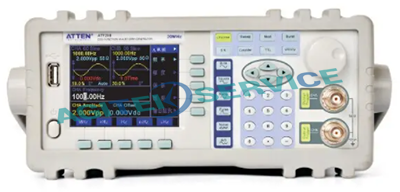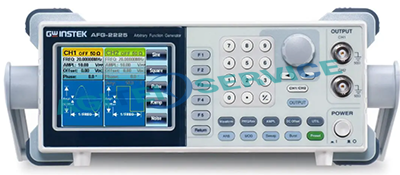 23664
23664Many people are not very clear about the common types, characteristics and functions of the signal generator. Now, AGTEKSERVICE Maintenance is a professional instrument maintenance engineer. Let's take you to know about the common types, characteristics and functions of the signal generator. I believe you can help you after reading this article, so that you can avoid detours!
Signal generator, also known as signal source or oscillator, is an instrument that generates electrical test signals of required parameters. It is widely used in production practice, science and technology, communication, broadcasting, television, industry, agriculture, biomedicine and other fields. Next, we will briefly introduce the common types, main characteristics, composition and functions of signal generators.

There are many kinds of signal generators, including sine signal generator, low frequency signal generator, high frequency signal generator, microwave signal generator, sweep frequency and programmable signal generator, frequency synthesis signal generator, function generator, pulse signal generator, random signal generator, noise signal generator and pseudorandom signal generator.
1. It has good long-term stability.
2. It has stepping, continuous output, setting and storage functions.
3. It has the functions of output overload indication, battery capacity indication and automatic shutdown.
4. It can realize full function self-protection and effectively overcome misoperation.
5. It also provides 24V field instrument power supply.

Oscillator:
This is the core component of the signal generator, which refers to the signals of different waveforms and frequencies generated by it. Generally speaking, the principle and structure of oscillators with different waveforms and different frequency bands have great differences.
Converter:
This is different according to different use conditions. It can be a power amplifier, a voltage amplifier or a shaper. The output signal of the oscillator is usually very weak, so it needs to be amplified. For example, FM and AM are required to modulate the signal to modulate the carrier frequency incoming line. The output of function generator and oscillator is generally triangle wave, which requires shaping circuit to shape into sine wave or square wave.
Indicator:
This is to monitor the output signal, which can be a power meter, voltmeter, frequency meter, etc. Some pulse signal generators are equipped with simple oscilloscopes to adjust the amplitude, frequency and other characteristics of the output signal through indicators.
Output stage:
This is used to adjust the output signal level and output impedance. It can be an attenuator, a matching transformer, an emitter follower, etc.
Power supply:
Generally, it refers to the working power supply voltage provided to each part of the signal generator.
In our daily practical work, the signal generator generally carries the following four functions:
1. Parameters of detection elements: such as inductance, capacitance value and quality factor;
2. Detect the phase frequency/amplitude frequency of the network: change the frequency of the signal source, and measure the network response through an oscilloscope, which is a sinusoidal steady-state excitation and point frequency test;
3. Detection of the transient response of the network: square wave or narrow pulse excitation is used to detect the time constant and impulse response of the network;
4. Calibrating instrument: Calibrate attenuator, gain and scale of electronic instrument by outputting frequency, amplitude and other signals.

I hope that the common types, characteristics and functions of signal generators mentioned above will be helpful to a wide range of instrument enthusiasts. If you find a fault in the signal generator, as an Aetna maintenance engineer, you should find a professional person to repair it, otherwise your improper operation may lead to more serious maintenance faults of the signal generator. Wuhan AGTEKSERVICE Testing Equipment Maintenance Co., Ltd., as a professional instrument maintenance company, has been deeply involved in the signal generator maintenance industry for 14 years, not limited to oscilloscope maintenance, spectrometer maintenance, network analyzer maintenance, power supply maintenance, thermal imager maintenance, signal source maintenance, power amplifier maintenance, etc., to help you solve any instrument maintenance problems, please feel free to consult!
Contact information of Wuhan AGTEKSERVICE Instrument Rental and Maintenance Center:
Tel.: 17037027802
Company website: http://www.agitekservice-wh.com/